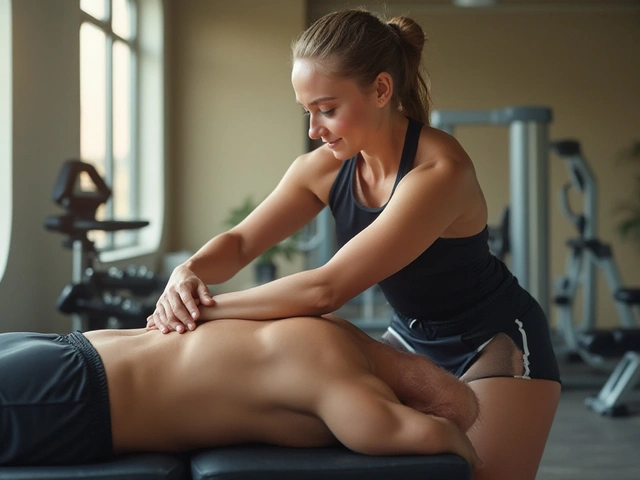Massage Tips: Simple Techniques for Better Recovery & Relaxation
Tired muscles, tense shoulders, or a restless pup after play? Massage helps when it's done with purpose. Below are clear, usable tips you can try right now to speed recovery, ease pain, and calm the body—whether you're working on yourself, a partner, or your dog.
Quick how-to for self or partner massage
Start with warm tissue. Use a warm shower, a heat pack for 5–10 minutes, or gentle stroking to increase blood flow before deeper work. For large muscles (quads, calves, back) use long, even strokes toward the heart to encourage circulation. Apply pressure with the heel of your hand, thumbs, or a foam roller: firm but never sharp—if it hurts in a stabbing way, ease off.
Use these basic moves: effleurage (long sweeping strokes), petrissage (kneading like dough), and friction (small circular pressure over knots). Spend 3–5 minutes per muscle group; total sessions of 10–20 minutes work well after workouts. Breathe and relax—encourage slow exhales during deeper pressure to help tissues let go.
For trigger points, press steadily for 20–30 seconds until tension softens, then follow with strokes to disperse the area. Tools like lacrosse balls, foam rollers, and massage sticks extend reach and let you target stubborn spots without straining your hands.
Canine massage tips you can use today
Dogs respond best to calm, short sessions. Keep initial sessions under 5 minutes and watch body language: loose wagging, relaxed breathing, and leaning in are good signs. Avoid pressing directly on the spine; work along the muscles on either side using gentle long strokes and light kneading. Use flat palms for broader strokes and fingertips for small spots, always moving from the neck toward the tail (follow natural hair direction).
Breathing matters for pets too. Stroke in rhythm with your dog's breathing—slow, even strokes during exhale help relaxation. If a dog pulls away, whines, or tenses, stop and try gentler pressure or a different spot. For older dogs or those with health issues, check with your vet before starting regular massage.
Hydrate and rest after massage. Massage increases circulation and helps flush metabolic waste—drinking water and avoiding intense activity for a few hours improves benefits. Track how you feel: less soreness, better sleep, and smoother movement mean it's working. If pain persists or gets worse, seek a professional therapist or medical advice.
Small, consistent sessions beat rare marathon treatments. Five to twenty minutes a few times a week keeps muscles healthy, speeds recovery, and reduces stress for both you and your pet. Use these tips, be gentle, and pay attention—massage should help, not hurt.

Unlock Ultimate Relaxation: Mastering the Art of Swedish Massage
Swedish massage is more than just a luxurious experience; it's a journey to deep relaxation and numerous health benefits. This article explores the intricate techniques of Swedish massage, the health advantages it offers, and practical tips for enhancing your massage experience. Whether you're a massage enthusiast or someone curious about embracing a new wellness practice, this guide provides valuable insights into mastering the art of Swedish massage for improved mental and physical well-being.

Hellerwork: The Essential Guide for Beginners
Aug, 8 2023



